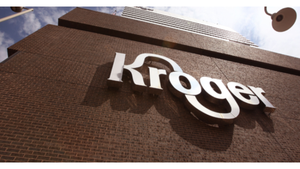25 top predictions for conscious CPG and retail in 202525 top predictions for conscious CPG and retail in 2025
What trends are rising in natural food and beverage, supplements, beauty, sustainability and more? Read on to see our predictions

Every year, as we navigate a sea of new products and talk with retailers and investors from across the country, we come up for air to ask: Which ideas and trends will rise to the top?
Looking ahead to 2025, the answer feels more complex than ever. A new administration, rapid technological advancements and economic volatility are set to reshape the landscape. From shifting tariffs and consumer behaviors to regulatory changes and retail challenges, the unknowns are vast. Yet the conscious CPG industry remains steadfast in its promise to innovate and deliver healthier, better-performing and more impactful products—ones that taste great, resonate with consumers and advance human and environmental health.
Here are our top trends and predictions for what’s shaping up to be a transformative year for CPG and retail.
Food and Beverage Trends

Waste-less food formats
Sure, using products quickly is one way to prevent food waste. But that puts the entire onus on the consumer. That’s why brands are taking more initiative by creating products with longer shelf lives and concentrated formats, such as freeze-dried and shelf-stable “sheets” (got paper-thin oat milk?). These solutions appeal to consumers focused on waste reduction and cost savings.
Market manifestations: Milkadamia Oat Milk sheets, Burroughs Family Farms Almond Milk Concentrate, Explorer Cold Brew Concentrate
Flex living
You don’t have to be vegan to enjoy cashew milk or sober to savor a mocktail. It’s perfectly fine to shop at a big box store before heading to your local co-op. You can sip a soda fortified with probiotics or pop a gummy instead of swallowing a pill. In today’s fluid and nonbinary world, consumers no longer feel the need to label their behaviors. Nearly half of Americans already identify as flexitarians in their eating habits, according to a Sprouts Farmers Market poll, and this mindset is spilling into all aspects of life. The result: The CPG industry is embracing partnerships with once-competitive markets, such as pharmaceuticals, while some retailers such as Whole Foods Market and Amazon are merging conventional and natural at the store level.
Market manifestations: Choppy Chopped Steak, Free AF Non Alcoholic Paloma, Malk Unsweetened Cashew Milk, Wiley’s Finest Omega 3 gummies
Protein-fueled innovation
Protein remains a powerhouse ingredient, now appearing in diverse formats including snacks, beverages and protein-enriched flours for baking and cooking. This trend reflects consumer demand for protein in everyday foods and its sustained popularity. Gen Z, in particular, leads the charge, with protein consistently topping their wish lists in Nutrition Business Journal surveys over the past year. This enduring enthusiasm signals continued opportunities for innovation in the years to come.
Market manifestations: Sturdy Sauce, Heavenly Waffles, Equii Rigatoni, Jack & Friends
Convenient comfort
Convenience-based comfort foods such as noodles and boba tea kits are growing in popularity, meeting demand for quick, comforting snacks and meals that replicate dining-out and fast-casual experiences at home.
Market manifestations: Momofuku Goods Spicy Soy Noodles, Fly By Jing + Lundberg Chili Crisp Rice, Twrl Lychee Popping Boba
Drink differently
The beverage category is overflowing with innovation, as consumers and retailers alike continue to embrace everything from nonalcoholic beer, wine and spirits to functional sippers. The latest trends spotlight reduced sugar, science-backed ingredients and bold, eye-catching packaging that stands out on shelves.
Market manifestations: Parch, Grüvi, Corpse Reviver, Huzzy, Melting Forest Beverages
Real food over alt meats
As sales of highly processed meat alternatives decline, consumers are seeking out cleaner, whole-food sources of sustenance. Blended plant and animal proteins and regenerative meat and dairy are filling the gap left by processed alt-meat products. At the same time, nondairy cheese innovation has yet to age out, with artisanal blends catering to dairy-sensitive shoppers even as more consumers return to animal-based products.
Market manifestations: Actual Veggies, Applegate Farms, Nuts for Cheese, Rebel Cheese
Flavor curiosity abounds
Younger demographics are driving demand for bold and novel flavors, often with global flare. This trend has opened the door for new products that incorporate international ingredients—such as yuzu, ube, harissa and gochujang—offering unique sensory experiences and celebrating culturally relevant culinary traditions.
Market manifestations: Heritage Kulfi, Heyday Canning, Fila Manila, Sanzo
Maker movement gets savvy
Artisanal brands—think umami-packed sauces, from-scratch frozen pizzas, meticulously crafted body care and a range of other natural delights—thrived this year. Plus, these brands are more retail-ready than ever. With beautiful branding, sustainable packaging and clearly articulated founding stories, the maker movement has undergone a business-savvy transformation.
Market manifestations: pi00a, Oodaalolly Chocolate, Foraged and Found Wild Alaskan Provisions
Beauty and Personal Care Trends

Inclusive clean beauty
Diverse-owned beauty brands are addressing unique BIPOC consumer needs with safe, transparent ingredients. This trend reflects consumer preference for inclusivity and eco-conscious practices in personal care and the desire to reach underserved populations with cleaner alternatives to traditional products that can carry a large toxic load.
Market manifestations: Shea Radiance, Karité Créme, Butter & Me, Pure Mitti, Nopalera
Beauty as wellness ritual
The lines between beauty, health and wellness are blurring, and consumers are getting creative with how they bridge mental health and physical beauty. Beauty routines are evolving into wellness rituals, with products like sleep-support beverages (think TikTok’s sleepy girl mocktail), cacao rituals and multistep skin care regimens that emphasize self-care and mental well-being.
Market manifestations: Ora Cacao Ceremonial Cacao, Moon Juice Sleepy Magnesi-Om, John Masters Organics Body Milk with Geranium and Ylang Ylang
Hormone-sensitive beauty benefits
Beauty brands are creating hormone-sensitive products for menopausal and aging skin. Botanicals such as black cohosh and ashwagandha, as well as algae for its antioxidant properties, are popular in these products, offering natural support for hormonal balance and skin health.
Market manifestations: Caire Beauty, Menobloom, Stripes Skincare
Wellness and Supplement Trends

Multifunctional health products
Consumers are seeking products that combine more than one health benefit, such as hydrating electrolytes with gut-restoring prebiotics. This multifunctional trend caters to a demand for simplicity and efficiency in wellness, with growing popularity of products such as low-sugar wellness beverages that infuse adaptogens, prebiotics, vitamins or minerals.
Market manifestations: HydraLyte Liver Support + Hydration, Fatty 15 C15:0 Fatty Acid Supplement, BelliWelli Daily Fiber + Probiotics, Recoup Gut Healthy Hydration, Wild Society Clear Whey Protein Isolate with Electrolytes
Longevity as a lifestyle
As longevity becomes a lifestyle, biohacking and healthspan-focused products are gaining momentum, particularly among millennials. Supplements for brain, joint and muscle health reflect a proactive approach to long-term wellness, with collagen and brain-supportive ingredients leading the charge in personalized healthy aging. In 2024, brain health supplements reached an estimated $1.31 billion in sales, growing 7.7% and 37% of consumers reported taking supplements as part of their biohacking experimentation, according to New Hope Network's Nutrition Business Journal.
Market manifestations: Host Defense Brain Stack, Bryan Johnson’s Blueprint, Bioniq, Quicksilver Biohacker Bundle
Peak performance for women
With 69% of women saying they're more likely to take a supplement designed for the female body, according to NBJ, women’s health products are expanding into areas beyond reproductive and sexual health, including sleep, stress and athletic performance, which are often hormone related too. New products feature ingredients such as creatine and adaptogens aimed specifically at women’s muscle recovery, energy and more.
Market manifestations: Levelle Nutrition Yes We Cran!, MindBodyGreen Creatine+, Winged Wellness Sleepyhead
Weight management support
The popularity of GLP-1 drugs such as Ozempic is boosting demand for supplements supporting weight maintenance and nutritional balance before, during and after use of these drugs. In fact, according to an NBJ survey, among current GLP-1 users, 46% take supplements daily. Supplement growth areas include fiber, prebiotics and protein, with future innovation likely. There may even be opportunities to support kids’ weight management journeys with targeted supplements, especially if the FDA approves GLP-1 drug usage for children age 12 and up.
Market manifestations: SuperGut GLP-1 Booster, CaloCurb GLP-1 Activator, Penulumn GLP-1 Probiotic, Metavo Advanced GLP-1 Glucose Metabolism Support
Cannabinoid innovation beyond CBD
While growth of CBD products slowed after the ingredient took the CPG industry by storm, cannabinoids like CBN show potential for targeted benefits such as sleep support. New formulations cater to consumer interest in alternative wellness, though their market potential is still developing; given CBD’s fate, being cautious about the expanding category is wise.
Market manifestations: Flora Works TruCBN, Charlotte’s Web Stay Asleep
Consumer Behavior Trends

Sustainability as standard
For Gen Z and millennials, sustainability is now a baseline expectation rather than a premium feature. An NBJ survey reveals that 17% of Gen Z and 18% of millennials purchase products based on sustainability messaging. Brands are responding with eco-friendly packaging, sustainable agriculture and transparent supply chains, while investors drive change through regenerative agriculture, enhancing soil health, biodiversity and carbon sequestration. This synergy of consumer demand and ESG-driven funding showcases a shared commitment to a healthier planet and resilient business models.
Market manifestations: Patagonia Provisions, True Grace, Gruff Ancient Grain Grits, Builders Vision Investment Fund, ReGen Brands Capital
Agency in the aisles
If oversight shifts away from federal agencies, brands face new challenges and opportunities to ensure trust, transparency and safety, while navigating unclear certification standards. Declining confidence in regulations also drives consumers to stay informed and take control of their health through purchasing decisions, fueling demand for transparent, mission-driven brands in the better-for-you CPG space. When it comes to dietary supplements, for example, according to an NBJ survey, 57% of consumers consider themselves “somewhat knowledgeable” about dietary supplement regulation. Brands are stepping up to educate their customers on what quality looks like—regardless of whether regulations are in place.
Market manifestations: Dr. Bronner’s, Plezi, Now Foods
Boomers wield power in wellness market
Despite the focus on younger demographics, boomers continue to hold strong purchasing power, especially in health and wellness categories, according to NielsenIQ. Brands should consider targeted marketing for this group, emphasizing quality, trust and health benefits that resonate with boomers’ priorities.
Market manifestations: Garden of Life 50 & Wiser Women, New Chapter Every Man’s One Daily 55+, Thorne Advanced Bone Support, Life Extension Healthy Aging Line, Costco Wholesaler
Gen Z reinvigorates in-store shopping
While digital channels are key, Gen Z is increasingly seeking in-store experiences, especially for supplements and wellness products. This shift highlights the importance of creative, engaging displays and endcaps to capture Gen Z’s attention and enhance the brick-and-mortar experience.
Market manifestations: Pop Up Grocer, Target wellness expansion, Urban Outfitters wellness collaborations, Erewhon
Investment and Business Operations Trends

(Re)shoring up your business
With rising tariffs on the horizon, CPG companies are exploring strategies to keep or bring sourcing and production in-house and closer to home. This shift aims to reduce the impact of higher costs on consumers while enhancing supply chain resilience. By decreasing reliance on foreign ingredients and manufacturing, companies can build more robust and adaptable business models to withstand future disruptions.
Market Manifestations: Traditional Medicinals, Trimtab Foods
Rise of private-label innovation
Retailers are rapidly innovating within private-label offerings, moving from budget options to high-quality and on-trend natural and organic products that compete with those of vendors. This trend challenges emerging brands, as private labels often have pricing, data and shelf-space advantages.
Market manifestations: Real Root by Sprouts, Thrive Market Goods, New Seasons Market Partner Brand, Mom’s Organic Market
AI-driven personalization and efficiency
AI is enhancing efficiencies in demand forecasting, inventory management and personalized product formulation and marketing. In wellness, companies are also using AI to measure health outcomes and identify unique botanical ingredients, giving brands competitive edge through data-backed precision.
Market manifestations: Ingredients AI, NotCo, Keychain, Plant Based Foods Association, Radicle Science, Brightseed
Profitability over growth-at-all-costs
Investors are prioritizing profitability over aggressive growth, marking a shift from the growth-at-all-costs mentality. This approach can favor sustainable returns and impact-driven investments but also requires brands to look very critically at every part of their business, which could lead to sustainability tradeoffs.
Market manifestations: Organic Valley, Nature’s Path, Lotus Foods, Jovial Foods
Higher revenue thresholds for acquisition
Consolidation favors larger brands, with smaller ones facing more competition. Acquisitions now generally target brands with $100 million or more in revenue, according to Nutrition Capital Network and Whipstitch Capital. This newly higher threshold puts more pressure on early-stage companies and leads to more fail-fast businesses.
Market manifestations: Rao’s Homemade, The Honey Pot Company, Siete Foods
.jpg?width=700&auto=webp&quality=80&disable=upscale) This article originally appeared on New Hope Network, a Supermarket News sister website. Visit the site for more trends and insights into the natural and organic products industry.
This article originally appeared on New Hope Network, a Supermarket News sister website. Visit the site for more trends and insights into the natural and organic products industry.
About the Authors
You May Also Like






